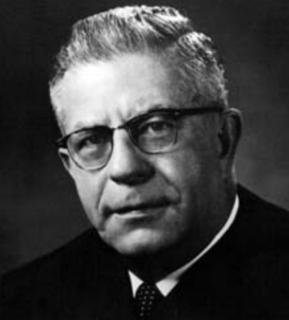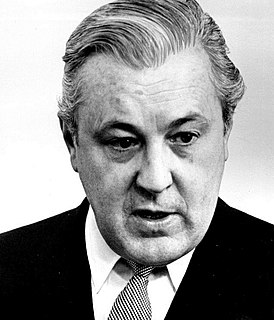Negligence is a failure to exercise appropriate and/or ethical ruled care expected to be exercised amongst specified circumstances. The area of tort law known as negligence involves harm caused by failing to act as a form of carelessness possibly with extenuating circumstances. The core concept of negligence is that people should exercise reasonable care in their actions, by taking account of the potential harm that they might foreseeably cause to other people or property.
Product liability is the area of law in which manufacturers, distributors, suppliers, retailers, and others who make products available to the public are held responsible for the injuries those products cause. Although the word "product" has broad connotations, product liability as an area of law is traditionally limited to products in the form of tangible personal property.
In law and insurance, a proximate cause is an event sufficiently related to an injury that the courts deem the event to be the cause of that injury. There are two types of causation in the law: cause-in-fact, and proximate cause. Cause-in-fact is determined by the "but for" test: But for the action, the result would not have happened. The action is a necessary condition, but may not be a sufficient condition, for the resulting injury. A few circumstances exist where the but for test is ineffective. Since but-for causation is very easy to show, a second test is used to determine if an action is close enough to a harm in a "chain of events" to be legally valid. This test is called proximate cause. Proximate cause is a key principle of Insurance and is concerned with how the loss or damage actually occurred. There are several competing theories of proximate cause. For an act to be deemed to cause a harm, both tests must be met; proximate cause is a legal limitation on cause-in-fact.
Res ipsa loquitur is a doctrine in the Anglo-American common law and Roman Dutch law that says in a tort or civil lawsuit a court can infer negligence from the very nature of an accident or injury in the absence of direct evidence on how any defendant behaved. Although modern formulations differ by jurisdiction, Anglo-American common law originally stated that the accident must satisfy the necessary elements of negligence: duty, breach of duty, causation, and injury. In res ipsa loquitur, the elements of duty of care, breach, and causation are inferred from an injury that does not ordinarily occur without negligence.
A tort, in common law jurisdiction, is a civil wrong that causes a claimant to suffer loss or harm, resulting in legal liability for the person who commits the tortious act. It can include intentional infliction of emotional distress, negligence, financial losses, injuries, invasion of privacy, and many other things. The word 'tort' stems from Old French via the Norman Conquest and Latin via the Roman Empire.
In criminal and civil law, strict liability is a standard of liability under which a person is legally responsible for the consequences flowing from an activity even in the absence of fault or criminal intent on the part of the defendant.
This article addresses torts in United States law. As such, it covers primarily common law. Moreover, it provides general rules, as individual states all have separate civil codes. There are three general categories of torts: intentional torts, negligence, and strict liability torts.
Byrne v Boadle is an English tort law case that first applied the doctrine of res ipsa loquitur.
Assumption of risk is a defense, specifically an affirmative defense, in the law of torts, which bars or reduces a plaintiff's right to recovery against a negligent tortfeasor if the defendant can demonstrate that the plaintiff voluntarily and knowingly assumed the risks at issue inherent to the dangerous activity in which the plaintiff was participating at the time of his or her injury.
In tort law, a duty of care is a legal obligation which is imposed on an individual, requiring adherence to a standard of reasonable care while performing any acts that could foreseeably harm others. It is the first element that must be established to proceed with an action in negligence. The claimant must be able to show a duty of care imposed by law which the defendant has breached. In turn, breaching a duty may subject an individual to liability. The duty of care may be imposed by operation of law between individuals who have no current direct relationship but eventually become related in some manner, as defined by common law.

Roger John Traynor was the 23rd Chief Justice of California (1964-1970) and an Associate Justice of the Supreme Court of California from 1940 to 1964. Previously, he also had served as a Deputy Attorney General of California under Earl Warren, and an Acting Dean and Professor of UC Berkeley School of Law. He is widely considered to be one of the most creative and influential judges as well as legal scholars of his time.
Comparative negligence, called non-absolute contributory negligence outside the United States, is a partial legal defense that reduces the amount of damages that a plaintiff can recover in a negligence-based claim, based upon the degree to which the plaintiff's own negligence contributed to cause the injury. When the defense is asserted, the factfinder, usually a jury, must decide the degree to which the plaintiff's negligence and the combined negligence of all other relevant actors all contributed to cause the plaintiff's damages. It is a modification of the doctrine of contributory negligence that disallows any recovery by a plaintiff whose negligence contributed even minimally to causing the damages.
Comparative responsibility is a doctrine of tort law that compares the fault of each party in a lawsuit for a single injury. Comparative responsibility may apply to intentional torts as well as negligence and encompasses the doctrine of comparative negligence.

Melvin Mouron Belli was a prominent United States lawyer, author, and actor known as "The King of Torts" and by insurance companies as "Melvin Bellicose". He had many celebrity clients, including Zsa Zsa Gabor, Errol Flynn, Chuck Berry, Muhammad Ali, The Rolling Stones, Jim Bakker and Tammy Faye Bakker, Martha Mitchell, Maureen Connolly, Lana Turner, Tony Curtis, and Mae West. During his legal career, he won over $600 million in damages for his clients. He was also the attorney for Jack Ruby, who shot Lee Harvey Oswald for the assassination of President John F. Kennedy.

Tort reform refers to proposed changes in the civil justice system that aim to reduce the ability of victims to bring tort litigation or to reduce damages they can receive.

In Henningsen v. Bloomfield Motors, Inc., 32 N.J. 358, 161 A.2d 69, the New Jersey Supreme Court held that an automobile manufacturer's attempt to use an express warranty that disclaimed an implied warranty of merchantability was invalid.
The following outline is provided as an overview of and introduction to tort law:

Chysky v. Drake Bros. Co., 235 N.Y. 468, 139 N.E. 576 (1922), was a products liability case before the New York Court of Appeals. The Court held that a plaintiff cannot recover from a defendant based on implied warranty when she does not have contractual privity with him; thus, a plaintiff cannot recover from a defendant who sold her employer food unfit for consumption, because the defendant's implied warranty extended only to the employer.
Ybarra v. Spangard was a leading case in California discussing the exclusive control element of res ipsa loquitur. "Where a plaintiff receives unusual injuries while unconscious and in the course of medical treatment, all those defendants who had any control over his body or the instrumentalities which might have caused the injuries may properly be called upon to meet the inference of negligence by giving an explanation of their conduct."

Greenman v. Yuba Power Products, Inc, was a California torts case in which the Supreme Court of California dealt with the torts regarding product liability and warranty breaches. The primary legal issue of the case was to determine whether a manufacturer is strictly liable in tort when an article he places on the market proves to have a defect that causes injury to a human being. The case was originally heard in a San Diego district court where the verdict was against the manufacturer. This verdict was appealed by the manufacturer to the Supreme Court of California which was presided by Gibson, C. J., Schauer, J., McComb, J., Peters, J., Tobriner, J., and Peek, J., and the opinion was delivered by Judge Roger J Traynor.






